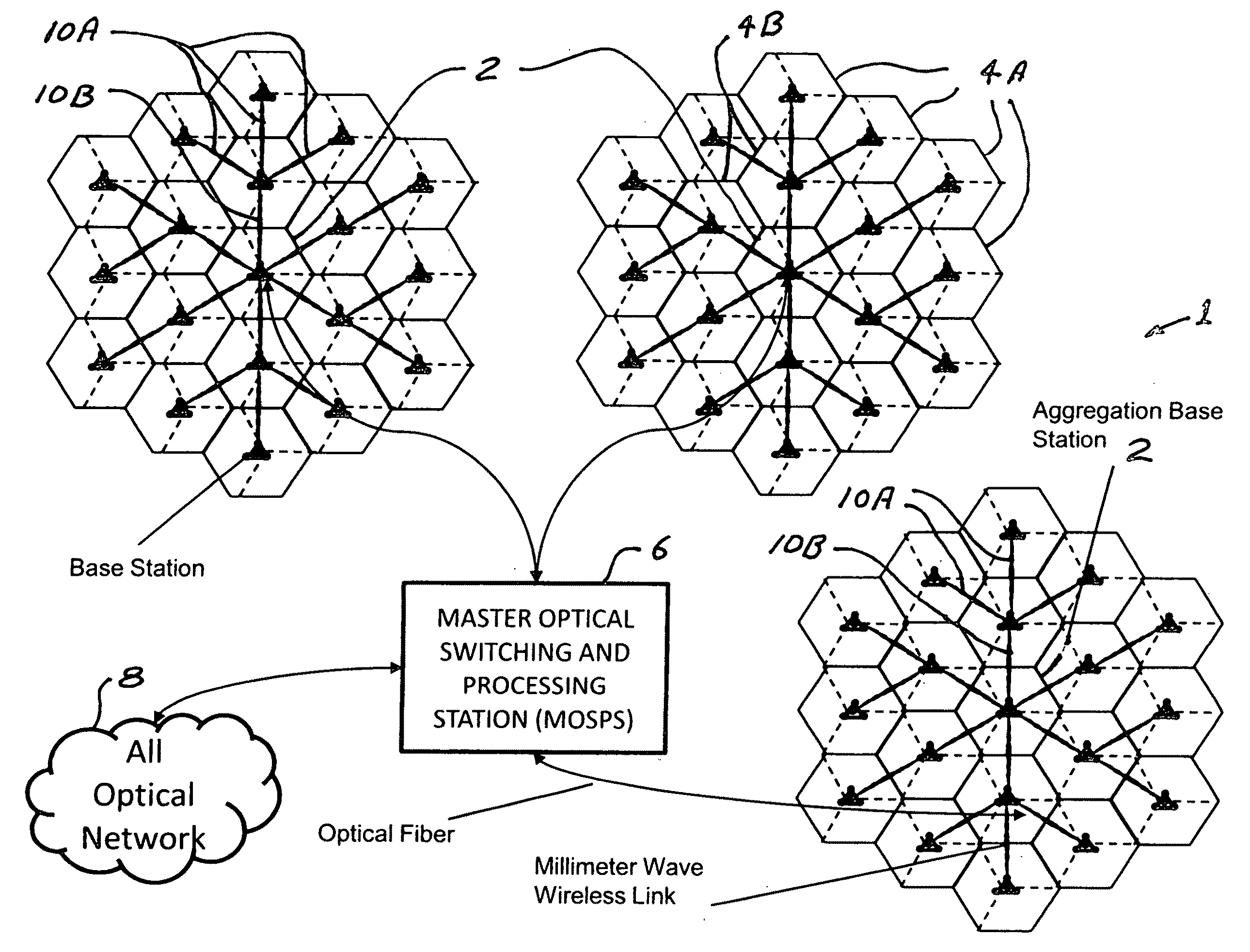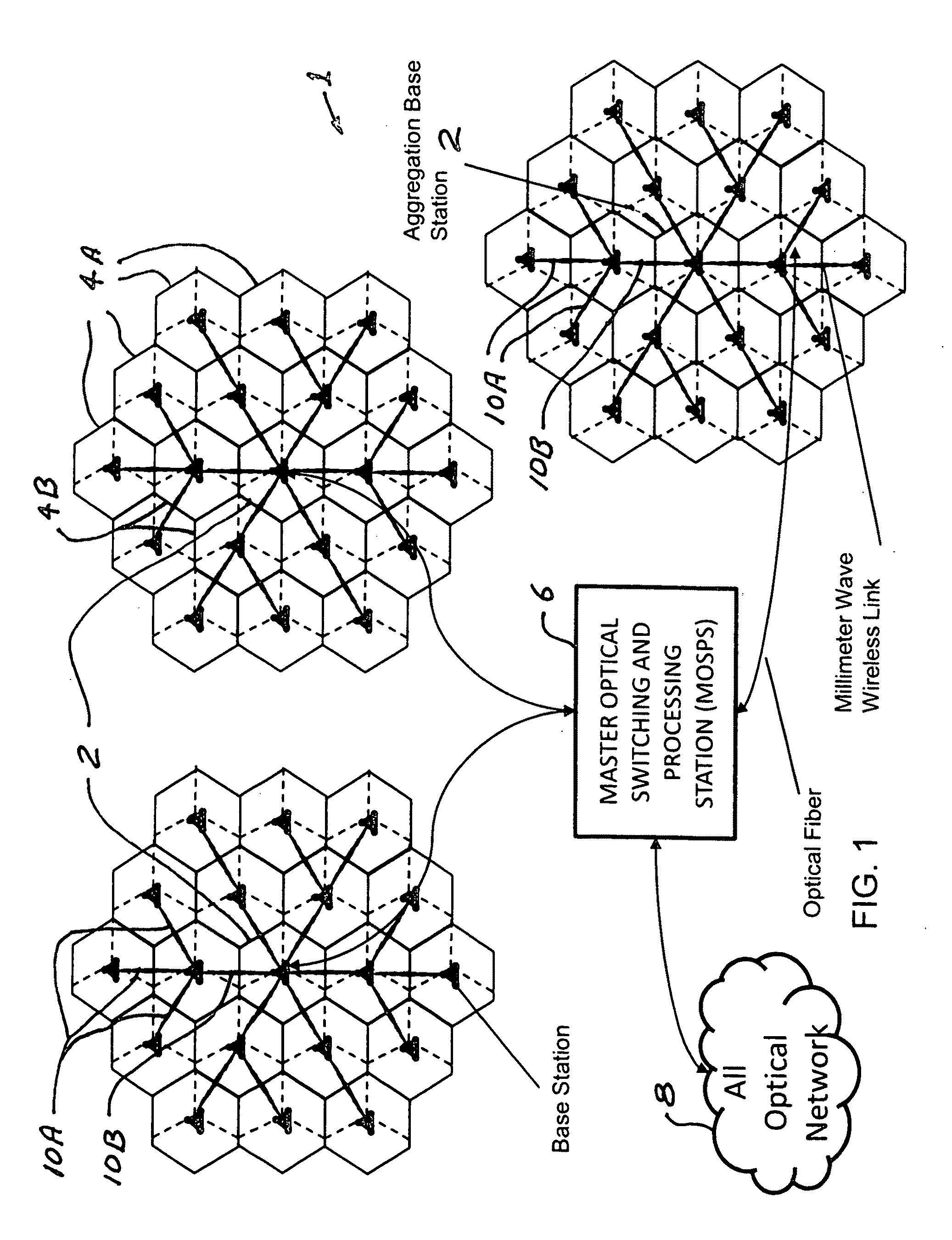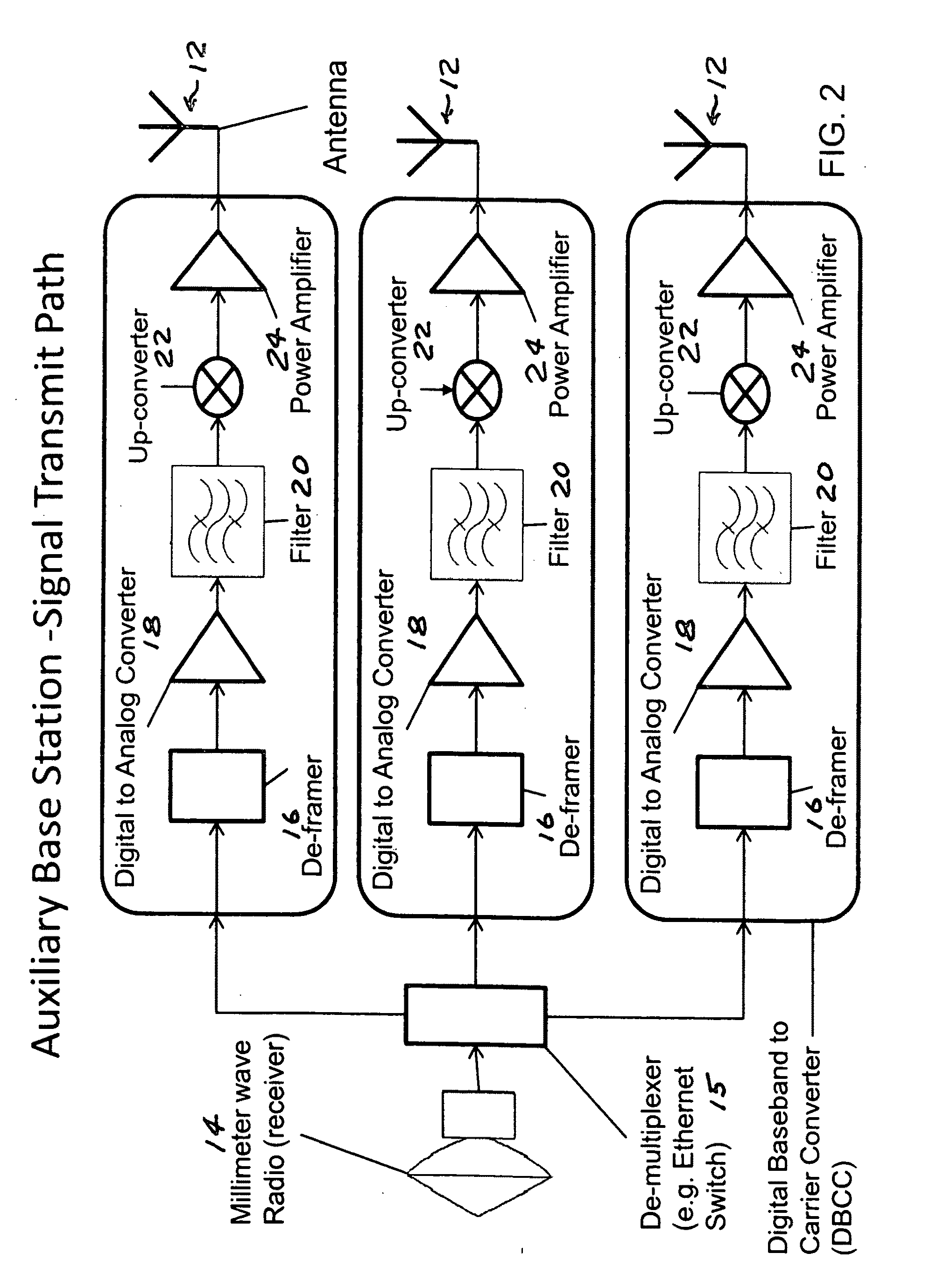Bandwidth allocation and management system for cellular networks
- Summary
- Abstract
- Description
- Claims
- Application Information
AI Technical Summary
Benefits of technology
Problems solved by technology
Method used
Image
Examples
first preferred embodiment
General Layout
[0051]A first preferred embodiment of the present invention can be described by reference to FIGS. 1 through 8. FIG. 1 is a layout of a bandwidth allocation and management system for a single cellular network 1. The principal components of the network include a number of aggregation base stations 2. Each aggregation base station 2 is surrounded by a number of auxiliary base stations 4A and auxiliary relay base stations 4B. In the network shown there are three aggregation base stations 2 and each of the aggregation base stations is in communication via millimeter wave radio links with 18 associated auxiliary base stations 4A and 4B. The aggregation base stations are each in fiber optical communication with a master optical switching and processing station 6 which in turn is in fiber optical communication with an all optical network 8.
Millimeter Wave Links
[0052]In this embodiment each of the aggregation base stations are in wireless communication with their associated au...
second preferred embodiment
Enhanced Spectral Efficiencies
Through Communication with Users through Multiple Base Stations
[0059]FIGS. 9 through 21 illustrate a second preferred embodiment in which a key benefit of this architecture can be realized. In traditional cellular network architecture, each cellular base station acts as in independent entity. As illustrated in FIG. 9, located at each base station is a set of antennas that receive and transmit radio signals and a set of processing equipment that process these signals. Even though signals transmitted by a mobile handheld devices propagate omni-directionally and is received by neighboring base stations as shown in FIG. 10, all but one of the base stations discards the signals. Only the base station that receives the strongest signal processes it and extracts information. In the same fashion, only one base station transmits signal to the mobile devices.
[0060]By harnessing the signal received by all the neighboring base stations, the system can achieve highe...
PUM
 Login to View More
Login to View More Abstract
Description
Claims
Application Information
 Login to View More
Login to View More - R&D
- Intellectual Property
- Life Sciences
- Materials
- Tech Scout
- Unparalleled Data Quality
- Higher Quality Content
- 60% Fewer Hallucinations
Browse by: Latest US Patents, China's latest patents, Technical Efficacy Thesaurus, Application Domain, Technology Topic, Popular Technical Reports.
© 2025 PatSnap. All rights reserved.Legal|Privacy policy|Modern Slavery Act Transparency Statement|Sitemap|About US| Contact US: help@patsnap.com



